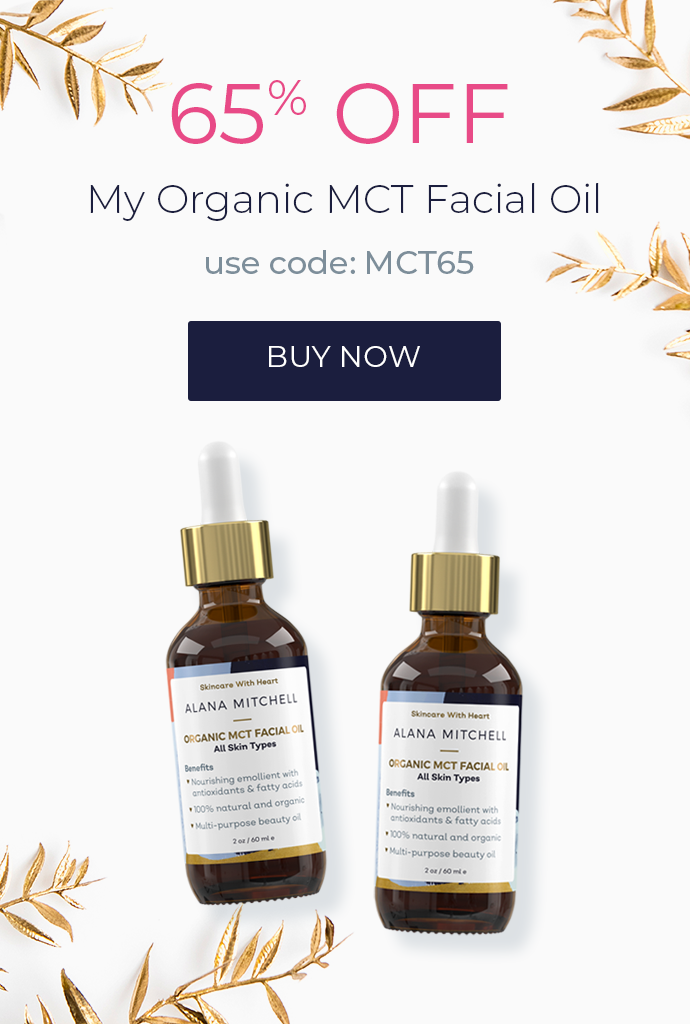What Should You Be Using In Your Skin Care Routine?
Take my quiz and get personalized recommendations from a
licensed esthetician!
Expert Insight: How to Apply Your Foundation Like a Pro!
Getting perfect coverage with foundation can be tricky.

Shutterstock
How do I get a flawless finish?
What’s the best method for application?
How do I keep it from streaking?
What is the best way to apply liquid foundation?
We use foundation so that we can have that smooth, airbrushed look.
But when our makeup disappears or goes on cakey (often highlighting the very imperfections we want to diminish), it doesn’t do us any favors, am I right?
A study conducted by research firm The NPD Group and commissioned by Make Up For Ever found that foundation application seems to be a big concern.

I hear ya, ladies!
Today, I’m excited to share some of my favorite tips and tricks for applying foundation like a straight-up pro!
First Thing's First
While makeup can help you in your quest to achieve flawless-looking skin, your best bet is to start with your best skin through good skincare.
This creates the ideal canvas so makeup goes on smoothly and accentuates all those fabulous natural features!
Below are the steps I recommend you take before applying foundation.
Step 1: Cleanser - Start by washing your face with a cleanser formulated for your skin type.
This will help remove any dirt or excess oils and get skin glowing and ready to go.
Use a gentle exfoliator 2-3 times a week to slough away dry skin that can cause patchiness or flaking.
Step 2: Toner or Astringent - Place a few drops of a toner or astringent on a cotton round and swipe over face and neck.
Again, make sure you’re using a toner for your skin type to get the best benefits.
 Shutterstock
Shutterstock
This will remove any dirt or residue leftover from your cleanser, and help clarify and balance skin so it’s perfectly prepped for your next step.
Step 3: Moisturizer/SPF - Dry skin and fine lines look even more apparent when makeup settles in and creases.
Hydrate skin with a good lightweight moisturizer before moving on to makeup.
If you have oily skin, don't fret - it can actually help prevent excess oil production.
And, unless you’re getting ready to go out at night, make sure to layer on daily sun protection with an SPF of 30 or higher.
Or, get a double-duty formula moisturizer that includes SPF protection!
Step 4: Primer - This step is optional, but a primer gives your skin an even surface to help makeup go on more smoothly.
It's gotten big in recent years for its ability to give your foundation, eyeshadow, and/or lipstick some serious staying power!
More advice for folks with oily skin - primer will prevent grease and shine from taking over and making your makeup disappear.
Some formulas also fill lines and pores, color correct, or contain SPF.
A little goes a long way!
Choosing the Right Foundation
One of the main elements in making sure your makeup looks on point is to use the right foundation for your skin.
Remember that study I mentioned up top?
Well, it also found that 73% of women say that finding the right foundation is a challenge and 54% struggle with getting the correct color match.

Shutterstock
Here’s a quick rundown of a few things to consider when choosing the right liquid makeup for you!
- Shade - The biggest factor in your makeup looking natural is to choose the right shade for your skin tone, making sure you’re not going too light or too dark. Choose a couple shades that look closest to your skin color and do some test swatches on your cheek near your jawbone. The one that disappears most is your match!
- Undertones - Don’t just look at the lightness/darkness of your makeup; choose a shade that will complement your skin’s undertones (cool, warm, neutral). To determine your undertone, look at the veins on the inside of your wrist. If they look blue or purple, your undertone is cool; if they’re green or olive colored, you’re warm; and if they’re a mix of both, you’re a neutral undertone. Foundations with a red/pink base are best for cool undertones; a gold/yellow base for warm; and a nude for neutral.
- Skin Type - Today’s formulas offer different benefits to target concerns tailored to your skin type. Do you need a hydrating formula for dry skin? A mattifying one to keep oil in check? Or maybe you want to combat some signs of aging while you’re beautifying? Choose a makeup that will best suit your skin while you wear it!
I'm going to include a little more about what formulas are best for each skin type - it's important!
- Dry skin - cream, liquid, or stick foundations as their consistency is more moisturizing
- Combination skin - apply more or less powder foundation in certain areas (i.e. your T-zone vs. your cheeks)
- Oily skin - oil-free liquid or powder foundation with a matte finish to control shine
- Sensitive skin - hypoallergenic, non-comedogenic, and scent-free foundation
If your complexion doesn't need a lot of coverage or if you want a "no makeup-makeup" look, choose a fair or sheer formula.
If you have an uneven complexion and want sufficient coverage, choose a medium to full formula.
How to Apply Foundation
There are three basic methods of choice when it comes to applying foundation: fingers, brushes, and sponges. But the best way to apply foundation? That's all up to you and your preference!
There are online videos of makeup mavens applying foundation with everything from paint rollers to silicone blenders to kitchen sponges, so obviously there’s no hard and fast rule when it comes to putting on your face.
Makeup pros are typically loyal to one or two techniques over the others, but it really comes down to preference and what works best for you.
You may even want to try a combo of a couple, such as applying makeup with your fingers then blending with a sponge.
Here’s a little rundown of what each of these tools has to offer!
Fingers
Many pros use their good ol’ digits when applying foundation.
Fingers came in especially handy (hee hee) with older, thicker formulas since they would melt a little with the hand’s natural body heat and go on smoother.

Shutterstock
Pros: Quick and easy, no money or extra tools required.
More control when applying makeup since you can basically put it on the same way you would moisturizer.
Cons: Less coverage control.
This method can result in streaky makeup since it doesn’t go on as evenly.
You may also end up rubbing makeup off in places while you’re applying.
Good for: Light coverage.
Sponges
These cute little guys come in every shape and size to fit all your makeup application and blending needs.
Professionals have been using them for years and favor them for amazing blending abilities.
If you do choose to go with a sponge, make sure it’s damp so you avoid taking off more makeup than you’re putting on.
Wet the sponge, squeeze out excess water and tap it on a clean towel before dipping into makeup.
Your sponge should be damp, but not wet.

Pros: Allows for even application and good control of coverage.
Great for blending makeup and concealing pores since it can press makeup evenly into skin.
Good for all skin types, but especially good for dry skin since the damp sponge won’t disturb skin’s surface.
Cons: Some experts argue that a sponge soaks up more makeup and ends up wasting product.
A damp sponge should curb that.
Also, sponges can get grungy and harbor oil and bacteria, so make sure you’re keeping them clean with a fragrance-free brush cleanser or soap!
Good for: Light, medium, or heavy coverage.
Brushes
You can be a true makeup artiste by brushing on your liquid makeup.
Beauty pros love brushes because they provide the most flawless application by distributing makeup more evenly on skin.
You can use a large soft stippling or buffing brush to blend makeup with light, circular strokes (don’t rub skin roughly!).
Makeup brushes also come in a variety of shapes, sizes, and textures, so talk to an expert (or do some quick online research) to find out what each one does and which one will give you the look you want.

Shutterstock
There are so many options to choose from that I could make a separate post just about brushes!
Pros: Most even application and flawless finish. Uses less product since it distributes makeup evenly.
Cons: Requires some blending after application. Brushes get scummy or lose their shape if not kept clean. Wash your brushes regularly!
Good for: Medium to heavy coverage.
My Tips for Applying Foundation
We’ve covered how to choose foundation and application tools. Now let’s get down to business and find out how to get flawless coverage.
Applying
Squeeze a small amount of makeup on the back of your hand so it’s easily accessible to work from like a palette.
You don't want to end up wasting excess product - it's always best to start with a dime-sized amount.

Shutterstock
Next, using your fingers, brush, or damp sponge, apply makeup to the center of your face on your forehead, nose, and chin (these are the areas that typically need the most coverage), and blend outward toward the edges of your face.
Use gentle tapping/dabbing motions.
If you have some peach fuzz on your face (we are mammals after all), apply makeup in downward strokes to smooth hair.
Blending
Keep makeup thinner around the edges of your face, along the hairline, and under the jaw to avoid a hard, distinct makeup line.
And, don’t forget to extend makeup down to your neck.
No makeup masks here!
When applying and blending makeup, don’t rub it in vigorously.
This can have a micro-exfoliating effect, which may exacerbate blemishes and make dry skin more noticeable.

Shutterstock
For more natural-looking makeup, you want to apply thin layers and gradually build coverage rather than slapping on one thick layer.
This is especially important if you’re going to an event since it will help you avoid looking washed out in photos!
Finish It Up
Follow-up foundation with concealer to cover blemishes or dark circles.
You should use a pea-sized amount of concealer that's the same color of your skin tone, and lightly blend outward with a sponge or small brush.

Finally, preserve all your lovely work by dusting on a translucent setting powder with a large fluffy brush, or spritzing setting spray to make sure everything stays put!
Consider Airbrushed Makeup
For the ultimate in flawless coverage, you might want to give airbrushed makeup a chance. I tried the Mineral Air system, and loved it so much I had to add it to my shop!

Unlike the bulky systems that used to only be available to professionals, this one is cordless and so easy to use!
Seriously, if you can spray a can of hairspray, you can use this airbrusher.
The lightweight foundation goes on flawlessly for buildable, even coverage.
Plus, it comes with three shades of liquid mineral makeup so you can mix your perfect custom match.
This comes in really handy when you want to adjust your shade for different seasons when your skin might be more tan or pale.
My Top Picks for Fabulous Foundation
Glo Minerals Liquid Foundation Brush
YoungBlood Ultimate Foundation Brush
YoungBlood Liquid Mineral Foundation
Image Skincare Conceal Flawless Foundation SPF30
Glo Minerals Protective Liquid Foundation Satin II
YoungBlood Loose Mineral Rice Setting Powder
Final Thoughts
Today I shared my tips for applying foundation, but as with any beauty and skincare routine, you gotta do what works for you.
The most important part of skincare is that you listen to your skin’s needs and take the best care of it.
After all, healthy skin is the most beautiful skin!
Did I miss anything? What are some of your favorite foundation tips? We’d love to hear all about them in the comments section!
Top Brands
New Brands

Recent Posts

Are You Taking the Right Steps to Care for Your Skin?
Take the Quiz
Skincare Secrets!
10-step guide for healthy, beautiful skin after kids.
100% privacy. I will never spam you!





















